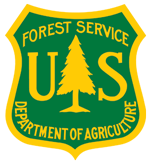-
 Scaling up from gardens: biodiversity conservation in urban environments
Scaling up from gardens: biodiversity conservation in urban environments
-
As urbanisation increases globally and the natural environment becomes increasingly fragmented, the
importance of urban green spaces for biodiversity conservation grows. In many countries, private gardens area major component of urban green space and can provideconsiderable biodiversity benefits. Gardens and
adjacent habitats form interconnected networks and a landscape ecology framework is necessary to understand the relationship between the spatial configuration of garden patches and their constituent biodiversity. A scale-dependent tension is apparent in garden management, whereby the individual garden is much smaller than the unit of management needed to retain viable populations. To overcome this, here we suggest mechanisms for encouraging ‘wildlife-friendly’ management of collections of gardens across scales from the neighbourhood to the city.
Located in
Resources
/
Climate Science Documents
-
 Scenarios of future land use change around United States’ protected areas
Scenarios of future land use change around United States’ protected areas
-
Land use change around protected areas can diminish their conservation value, making it important to
predict future land use changes nearby. Our goal was to evaluate future land use changes around protected
areas of different types in the United States under different socioeconomic scenarios. We analyzed
econometric-based projections of future land use change to capture changes around 1260 protected
areas, including National Forests, Parks, Refuges, and Wilderness Areas, from 2001 to 2051, under different
land use policies and crop prices. Our results showed that urban expansion around protected areas
will continue to be a major threat, and expand by 67% under business-as-usual conditions.
Concomitantly, a substantial number of protected areas will lose natural vegetation in their surroundings.
National land-use policies or changes in crop prices are not likely to affect the overall pattern of land use,
but can have effects in certain regions. Discouraging urbanization through zoning, for example, can
reduce future urban pressures around National Forests and Refuges in the East, while the implementation
of an afforestation policy can increase the amount of natural vegetation around some Refuges throughout
the U.S. On the other hand, increases in crop prices can increase crop/pasture cover around some protected
areas, and limit the potential recovery of natural vegetation. Overall, our results highlight that future
land-use change around protected areas is likely to be substantial but variable among regions and
protected area types. Safeguarding the conservation value of protected areas may require serious consideration of threats and opportunities arising from future land use.
Located in
Resources
/
Climate Science Documents
-
 A long-term perspective on a modern drought in the American Southeast
A long-term perspective on a modern drought in the American Southeast
-
The depth of the 2006–9 drought in the humid, southeastern US left several metropolitan areas
with only a 60–120 day water supply. To put the region’s recent drought variability in a long-term
perspective, a dense and diverse tree-ring network—including the first records throughout the
Apalachicola–Chattahoochee–Flint river basin—is used to reconstruct drought from 1665 to 2010
CE. The network accounts for up to 58.1% of the annual variance in warm-season drought during
the 20th century and captures wet eras during the middle to late 20th century. The reconstruction
shows that the recent droughts are not unprecedented over the last 346 years. Indeed, droughts of
extended duration occurred more frequently between 1696 and 1820. Our results indicate that the
era in which local and state water supply decisions were developed and the period of instrumental
data upon which it is based are amongst the wettest since at least 1665. Given continued growth
and subsequent industrial, agricultural and metropolitan demand throughout the southeast, insights
from paleohydroclimate records suggest that the threat of water-related conflict in the region has
potential to grow more intense in the decades to come.
Located in
Resources
/
Climate Science Documents
-
 Invited Review: Quantifying surface albedo and other direct biogeophysical climate forcings of forestry activities
Invited Review: Quantifying surface albedo and other direct biogeophysical climate forcings of forestry activities
-
By altering fluxes of heat, momentum, and moisture exchanges between the land surface and atmosphere, forestry and other land-use activities affect climate. Although long recognized scientifically as being important, these so-called biogeophysical forcings are rarely included in climate policies for forestry and other land management projects due to the many challenges associated with their quantification. Here, we review the scientific literature in the fields of atmospheric science and terrestrial ecology in light of three main objectives: (i) to elucidate the challenges associated with quantifying biogeophysical climate forcings connected to land use and land management, with a focus on the forestry sector; (ii) to identify and describe scientific approaches and/or metrics facilitating the quantification and interpretation of direct biogeophysical climate forcings; and (iii) to identify and recommend research priorities that can help overcome the challenges of their attribution to specific land-use activities, bridging the knowledge gap between the climate modeling, forest ecology, and resource management communities. We find that ignoring surface
biogeophysics may mislead climate mitigation policies, yet existing metrics are unlikely to be sufficient. Successful metrics ought to (i) include both radiative and nonradiative climate forcings; (ii) reconcile disparities between biogeophysical and biogeochemical forcings, and (iii) acknowledge trade-offs between global and local climate benefits. We call for more coordinated research among terrestrial ecologists, resource managers, and coupled climate modelers to harmonize datasets, refine analytical techniques, and corroborate and validate metrics that are more amenable to analyses at the scale of an individual site or region.
Located in
Resources
/
Climate Science Documents
-
 Reconciling nature conservation and traditional farming practices: a spatially explicit framework to assess the extent of High Nature Value farmlands in the European countryside
Reconciling nature conservation and traditional farming practices: a spatially explicit framework to assess the extent of High Nature Value farmlands in the European countryside
-
Over past centuries, European landscapes have been shaped by human management. Traditional, low intensity agricultural practices, adapted to local climatic, geographic, and environmental conditions, led to a rich, diverse cultural and natural heritage, reflected in a wide range of rural landscapes, most of which were preserved until the advent of industrialized agriculture (Bignal & McCracken 2000; Paracchini et al. 2010; Oppermann et al. 2012). Agricultural landscapes currently account for half of Europe’s territory (Overmars et al. 2013), with ca. 50% of all species relying on agricultural habitats at least to some extent (Kristensen 2003; Moreira et al. 2005; Halada et al. 2011). Due to their acknowledged role in the maintenance of high levels of biodiversity, low-intensity farming systems have been highlighted as critical to nature conservation and protection of the rural environment (Beaufoy et al. 1994; Paracchini et al. 2010; Halada et al.2011; Egan & Mortensen 2012).
Located in
Resources
/
Climate Science Documents
-
 Fear of failure in conservation: The problem and potential solutions to aid conservation of extremely small populations
Fear of failure in conservation: The problem and potential solutions to aid conservation of extremely small populations
-
The potential for extirpation of extremely small populations (ESPs) is high due to their vulnerability to
demographic and environmental stochasticity and negative impacts of human activity. We argue that
conservation actions that could aid ESPs are sometimes delayed because of a fear of failure. In human
psychology, the fear of failure is composed of several distinct cognitive elements, including ‘‘uncertainty
about the future’’ and ‘‘upsetting important others.’’ Uncertainty about the future is often driven by information obstacles in conservation: information is either not easily shared among practitioners or information is lacking. Whereas, fear of upsetting important others can be due to apprehension about angering constituents, peers, funders, and other stakeholders. We present several ways to address these fears in hopes of improving the conservation process. We describe methods for increased information sharing and improved decision-making in the face of uncertainty, and recommend a shift in focus to cooperative actions and improving methods for evaluating success. Our hope is that by tackling stumbling blocks due to the apprehension of failure, conservation and management organizations can take steps to move from fear to action.
Located in
Resources
/
Climate Science Documents
-
 Protected areas in Borneo may fail to conserve tropical forest biodiversity under climate change
Protected areas in Borneo may fail to conserve tropical forest biodiversity under climate change
-
Protected areas (PAs) are key for conserving rainforest species, but many PAs are becoming increasingly
isolated within agricultural landscapes, which may have detrimental consequences for the forest biota
they contain. We examined the vulnerability of PA networks to climate change by examining connectivity
of PAs along elevation gradients. We used the PA network on Borneo as a model system, and examined
changes in the spatial distribution of climate conditions in future. A large proportion of PAs will not
contain analogous climates in future (based on temperature projections for 2061–2080), potentially
requiring organisms to move to cooler PAs at higher elevation, if they are to track climate changes. For
the highest warming scenario (RCP8.5), few (11–12.5%; 27–30/240) PAs were sufficiently topographically
diverse for analogous climate conditions (present-day equivalent or cooler) to remain in situ. For the
remaining 87.5–89% (210–213/240) of PAs, which were often situated at low elevation, analogous climate
will only be available in higher elevation PAs. However, over half (60–82%) of all PAs on Borneo are too
isolated for poor dispersers (<1 km per generation) to reach cooler PAs, because there is a lack of connecting
forest habitat. Even under the lowest warming scenario (RCP2.6), analogous climate conditions will
disappear from 61% (146/240) of PAs, and a large proportion of these are too isolated for poor dispersers
to reach cooler PAs. Our results suggest that low elevation PAs are particularly vulnerable to climate
change, and management to improve linkage of PAs along elevation gradients should be a conservation
priority
Located in
Resources
/
Climate Science Documents
-
 The State of Greenhouse Gases in the Atmosphere Based on Global Observations through 2013
The State of Greenhouse Gases in the Atmosphere Based on Global Observations through 2013
-
The WMO Global Atmosphere Watch (GAW) coordinates observations of the most important contributors to climate change: long-lived greenhouse gases(LLGHG). In the figure, their radiative forcing (RF) is plotted along with a simple illustration of the impacts on future RF of different emission reduction scenarios. Analysis of GAW observations shows that a reduction in RF from its current level (2.92 W·m–2 in
2013)[1] requires significant reductions in anthropogenic emissions of all major greenhouse gases (GHGs).
Located in
Resources
/
Climate Science Documents
-
 Insect herbivory alters impact of atmospheric change on northern temperate forests
Insect herbivory alters impact of atmospheric change on northern temperate forests
-
Stimulation of forest productivity by elevated concentrations of CO2 is expected to partially offset continued increases in anthropogenic CO2 emissions. However, multiple factors can impair the capacity of forests to act as carbon sinks; prominent among these are tropospheric O3 and nutrient limitations (1,2). Herbivorous insects also influence carbon and nutrient dynamics in forest ecosystems, yet are often ignored in ecosystem models of forest productivity. Here we assess the effects of elevated levels of CO2 and O3 on insect-mediated canopy damage and organic matter deposition in aspen and birch stands at the Aspen FACE facility in northern Wisconsin, United States. Canopy damage was markedly higher in the elevated CO2 stands, as was the deposition of organic substrates and nitrogen. The opposite trends were apparent in the elevated O3 stands. Using a light-use efficiency model, we show that the negative impacts of herbivorous insects on net primary production more than doubled under elevated concentrations of CO2, but decreased under elevated concentrations of O3. We conclude that herbivorous insects may limit the capacity of forests to function as sinks for anthropogenic carbon emissions in a high CO2 world.
Located in
Resources
/
Climate Science Documents
-
 Conserving the Stage: Climate Change and the Geophysical Underpinnings of Species Diversity
Conserving the Stage: Climate Change and the Geophysical Underpinnings of Species Diversity
-
Conservationists have proposed methods for adapting to climate change that assume species distributions are primarily explained by climate variables. The key idea is to use the understanding of species-climate relationships to map corridors and to identify regions of faunal stability or high species turnover. An alternative approach is to adopt an evolutionary timescale and ask ultimately what factors control total diversity, so that over the long run the major drivers of total species richness can be protected. Within a single climatic region, the temperate area encompassing all of the Northeastern U.S. and Maritime Canada, we hypothesized that geologic factors may take precedence over climate in explaining diversity patterns.
If geophysical diversity does drive regional diversity, then conserving geophysical settings may offer an approach to conservation that protects diversity under both current and future climates. Here we tested how well geology predicts the species diversity of 14 US states and three Canadian provinces, using a comprehensive new spatial dataset. Results of linear regressions of species diversity on all possible combinations of 23 geophysical and climatic variables indicated that four geophysical factors; the number of geological classes, latitude, elevation range and the amount of calcareous bedrock, predicted species diversity with certainty (adj. R2 = 0.94). To confirm the species-geology relationships we ran an
independent test using 18,700 location points for 885 rare species and found that 40% of the species were restricted to a single geology. Moreover, each geology class supported 5–95 endemic species and chi-square tests confirmed that calcareous bedrock and extreme elevations had significantly more rare species than expected by chance (P,0.0001), strongly corroborating the regression model. Our results suggest that protecting geophysical settings will conserve the stage for current and future biodiversity and may be a robust alternative to species-level predictions.
Located in
Resources
/
Climate Science Documents























